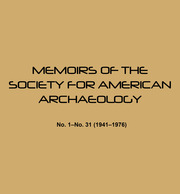No CrossRef data available.
Article contents
Chapter 9. Some Implications of the Theory
Published online by Cambridge University Press: 27 June 2018
Extract
A theory has been developed, in Chapters 1 through 3, of the social organization of hunting-gathering societies. This theory necessarily dealt also with the territorial or residential organization of such groups. Evidence was presented in Chapters 4 through 8 that the large majority of ethnograhpically known hunting-gathering groups corresponds in some detail to what would be expected from the theory. It also appears that occasional cases of matrilocal and bilocal residence, but not composite bands in the sense of neolocal residence, are predictable on ecological grounds from the more widespread patrilineal, patrilocal lineage-band.
This theory, then, has implications for the distribution of cultural items and the distribution of genes in past and present hunting societies. Some of these implications are potentially testable, others are not. In the following paragraphs, some of these implications will be presented. They will be presented in two sections—general implications and genetic implications. The first section—the general implications—is a brief section intended to display the possibilities which may be explored based on deduction from the theory. As it is a brief survey it is somewhat superficial and “speculative,” but the implications are real.
- Type
- Section III: Comparative Data and Conclusions
- Information
- Memoirs of the Society for American Archaeology , Volume 29: A Model of band society , 1974 , pp. 105 - 107
- Copyright
- Copyright © Society for American Archaeology 1974


